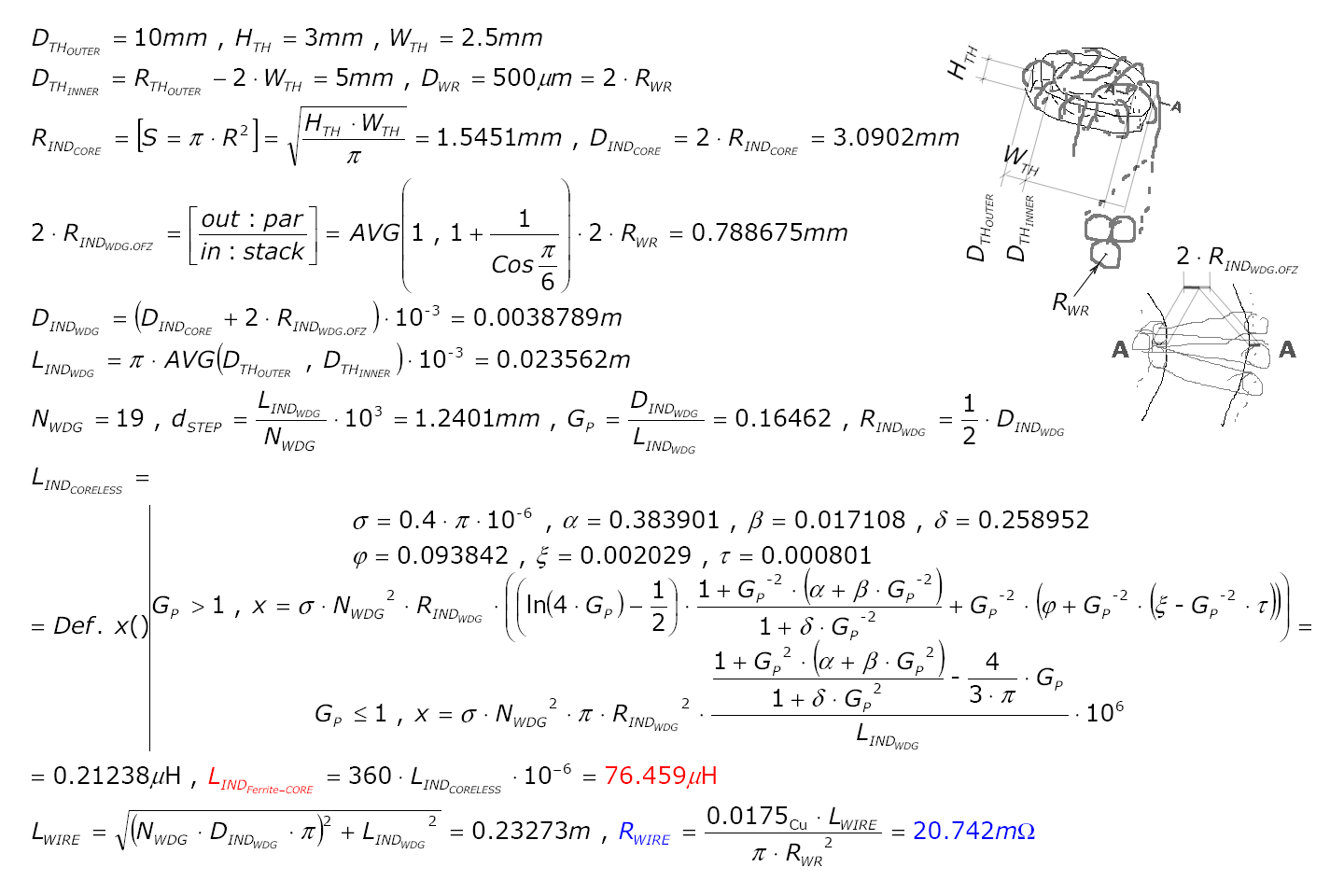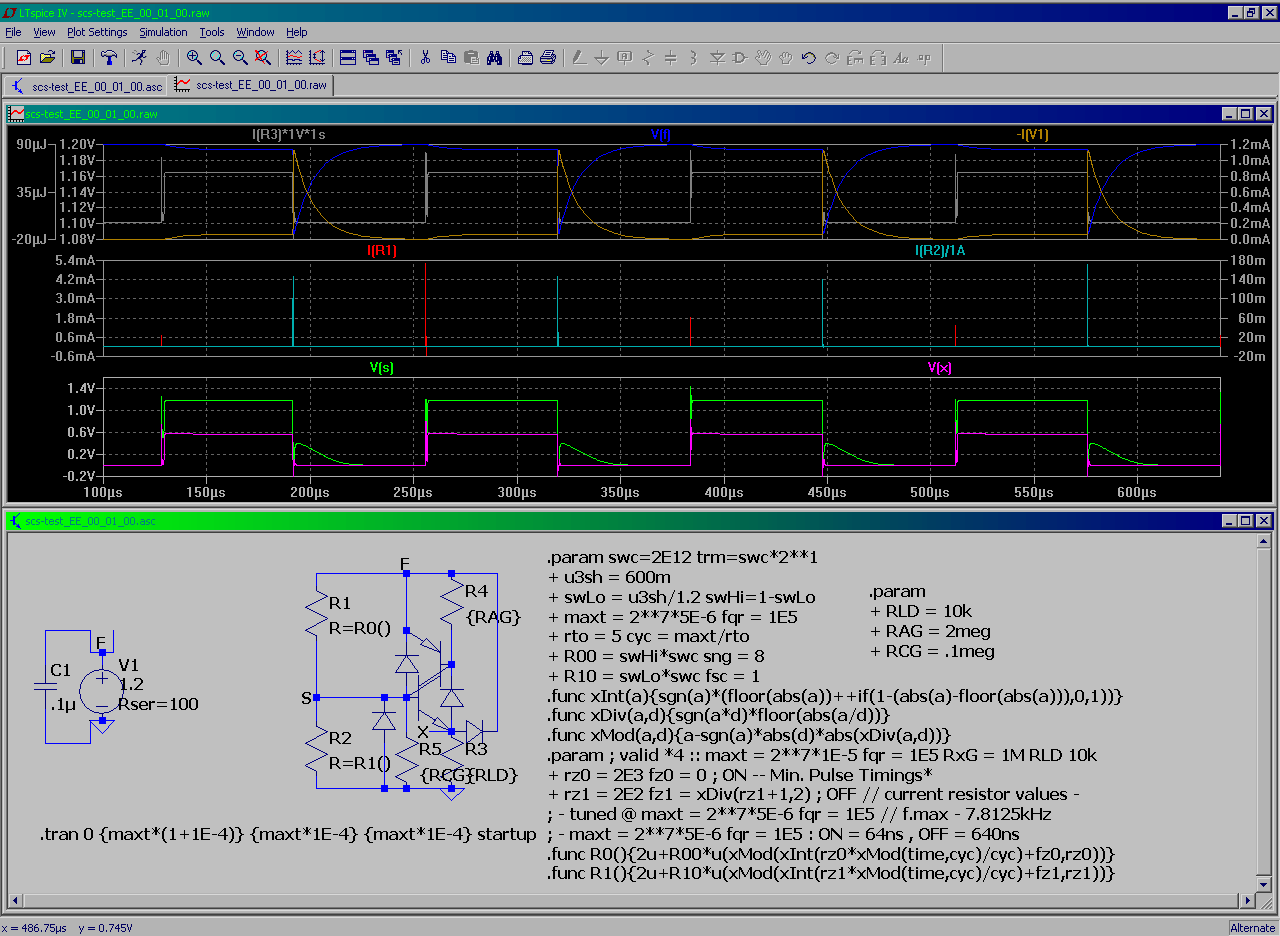i've built several of these bullsh¡t -- the only one that seems to function fine not been taken back appart to spares -- it goes from 1 AAA about 24h , perhaps more , then simultaneously restarts at low battery after being "mute" at some 36h after initial 24+h time of operation , then it works barely visible next 24+h - - i guess (for obvious reasons i haven't just sat and watched what it exactly does) -- the grid ::  (R2 here is to match the BC847 to a real KT315 ) the measured operational data :: avg. 1.4415V (40...50 assume) 47mA @ input terminals , avg. 5585mV(28.5...28.7mV @ 10.3Ω res. = ) 2.7767mA @ "High" voltage terminals - gives us apx. 22.3% efficiency in NRG2NRG and 11.2% efficiency in NRG2Light --- the blue light being well detectable gives here the effect of "successful" design (& sh¡t ...) ... so revisited v. ::
(R2 here is to match the BC847 to a real KT315 ) the measured operational data :: avg. 1.4415V (40...50 assume) 47mA @ input terminals , avg. 5585mV(28.5...28.7mV @ 10.3Ω res. = ) 2.7767mA @ "High" voltage terminals - gives us apx. 22.3% efficiency in NRG2NRG and 11.2% efficiency in NRG2Light --- the blue light being well detectable gives here the effect of "successful" design (& sh¡t ...) ... so revisited v. ::  ◄ that thing matches the real "GO" better than the previous simulation -- apx. measured / derived operational data :: 1.472V ~47mA @ input terminals , 8.37V 4.59mA @ "High" voltage terminals - gives us apx. 55.5% efficiency in NRG2NRG and 27.8% efficiency in NRG2Light --- there is no experimental data yet about the responce to an input power variation (just wanted to verify such works)
◄ that thing matches the real "GO" better than the previous simulation -- apx. measured / derived operational data :: 1.472V ~47mA @ input terminals , 8.37V 4.59mA @ "High" voltage terminals - gives us apx. 55.5% efficiency in NRG2NRG and 27.8% efficiency in NRG2Light --- there is no experimental data yet about the responce to an input power variation (just wanted to verify such works)
Confirming that the "guess" value used for inductor in the last DC-DC converter does not fall too far from the actual 1 ... ◄ about
◄ about
* -- assumed / defaulted to - diameter 0.1mm* (corrected for 0.5mm)
-!- -- the error is given so because there's no data about the real values (should be derived experimentally)
some changes :: ... usually there's not enough power to push the power transistor ...
... usually there's not enough power to push the power transistor ...
(Added 2015-01-10) LTSpice Src ...
[EoF]
 (R2 here is to match the BC847 to a real KT315 ) the measured operational data :: avg. 1.4415V (40...50 assume) 47mA @ input terminals , avg. 5585mV(28.5...28.7mV @ 10.3Ω res. = ) 2.7767mA @ "High" voltage terminals - gives us apx. 22.3% efficiency in NRG2NRG and 11.2% efficiency in NRG2Light --- the blue light being well detectable gives here the effect of "successful" design (& sh¡t ...) ... so revisited v. ::
(R2 here is to match the BC847 to a real KT315 ) the measured operational data :: avg. 1.4415V (40...50 assume) 47mA @ input terminals , avg. 5585mV(28.5...28.7mV @ 10.3Ω res. = ) 2.7767mA @ "High" voltage terminals - gives us apx. 22.3% efficiency in NRG2NRG and 11.2% efficiency in NRG2Light --- the blue light being well detectable gives here the effect of "successful" design (& sh¡t ...) ... so revisited v. ::  ◄ that thing matches the real "GO" better than the previous simulation -- apx. measured / derived operational data :: 1.472V ~47mA @ input terminals , 8.37V 4.59mA @ "High" voltage terminals - gives us apx. 55.5% efficiency in NRG2NRG and 27.8% efficiency in NRG2Light --- there is no experimental data yet about the responce to an input power variation (just wanted to verify such works)
◄ that thing matches the real "GO" better than the previous simulation -- apx. measured / derived operational data :: 1.472V ~47mA @ input terminals , 8.37V 4.59mA @ "High" voltage terminals - gives us apx. 55.5% efficiency in NRG2NRG and 27.8% efficiency in NRG2Light --- there is no experimental data yet about the responce to an input power variation (just wanted to verify such works)Confirming that the "guess" value used for inductor in the last DC-DC converter does not fall too far from the actual 1 ...
 ◄ about
◄ about
| x | Spice | Computed | -!- Error |
| Inductance | 60µH | 76µH | 68µH ± 12% |
| Resistance | 980mΩ* (39mΩ) | 21mΩ | 30mΩ ± 30% |
* -- assumed / defaulted to - diameter 0.1mm* (corrected for 0.5mm)
-!- -- the error is given so because there's no data about the real values (should be derived experimentally)
some changes ::
 ... usually there's not enough power to push the power transistor ...
... usually there's not enough power to push the power transistor ...
(Added 2015-01-10) LTSpice Src ...
[EoF]





















 and some more
and some more






























